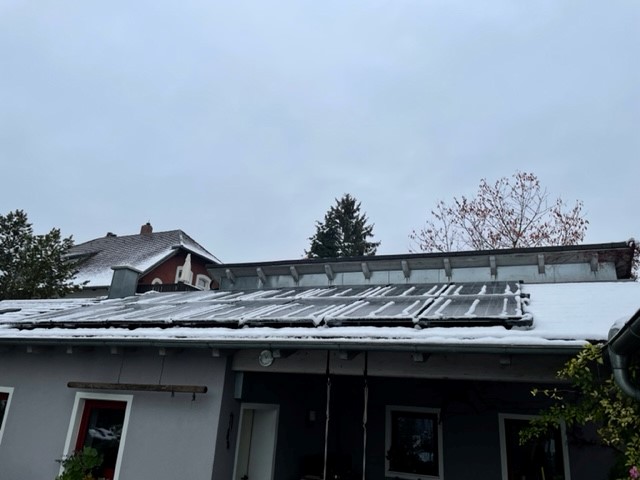Anyone planning to install a photovoltaic system on the roof of their house will at some point have to deal with the issue of winter. What happens when it snows and the system can only generate very little or no electricity? If the system is located on a roof with a pitch of 30 degrees or ideally 40 degrees, the snow will usually slide off the slippery modules on its own. If this is not the case, you have to wait for milder temperatures or remove the snow from the solar installation by hand. The latter not only takes time and is a lot of work, depending on the size of the system, but also involves a serious risk of accidents.
PVT collectors do not usually have this problem. The photo shows a PRISMA® PVT 3.0 test system in the Upper Palatinate. As you can see, the snow has not slipped off the modules, but has thawed on them. How can that be, if there is snow on the modules, they cannot produce any electricity and therefore no heat? That is correct, but the PVT modules have a decisive advantage over simple PV modules; there are copper pipes underneath the PV modules that are connected to a brine circuit. When this circuit starts up, the frost-proof solar fluid is heated by the heat exchanger in the buffer cylinder. As a result, the snow on the PRISMA® PVT collectors thaws. In this example, the brine circuit was started manually. The modules were free of snow after approx. 30 minutes and were producing electricity again.


